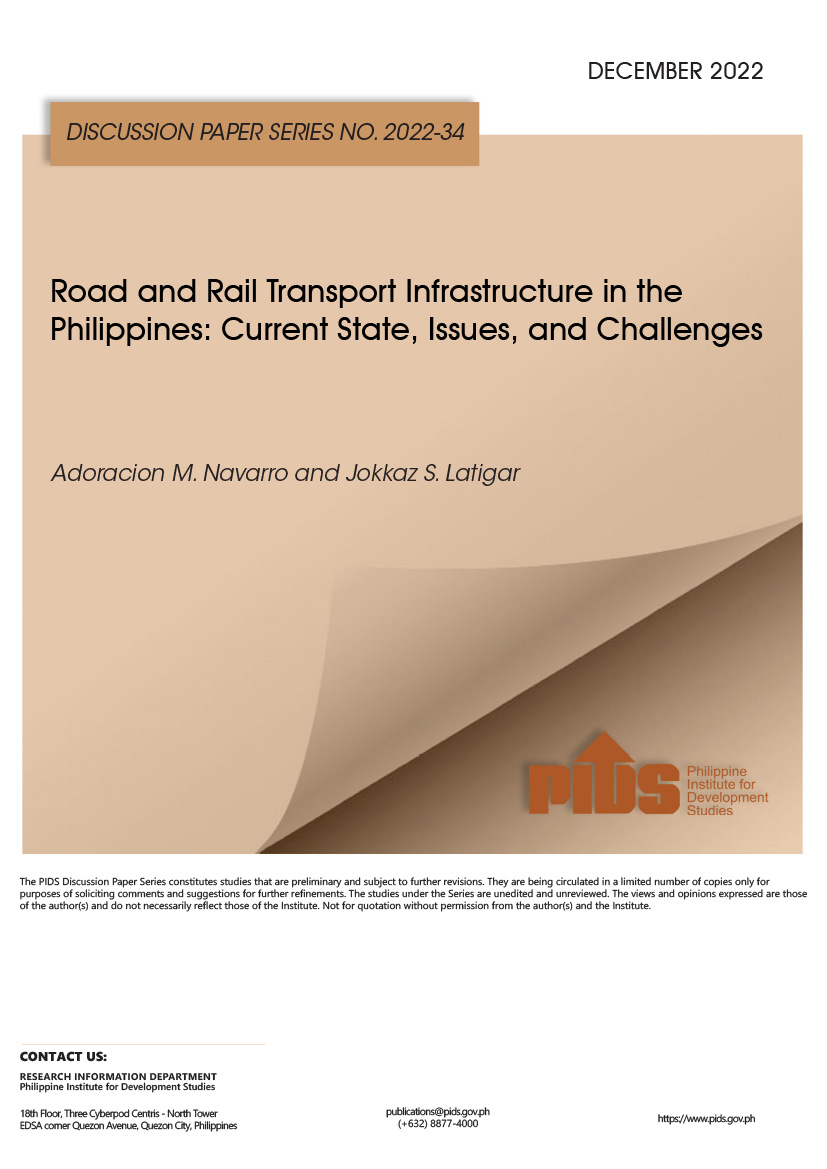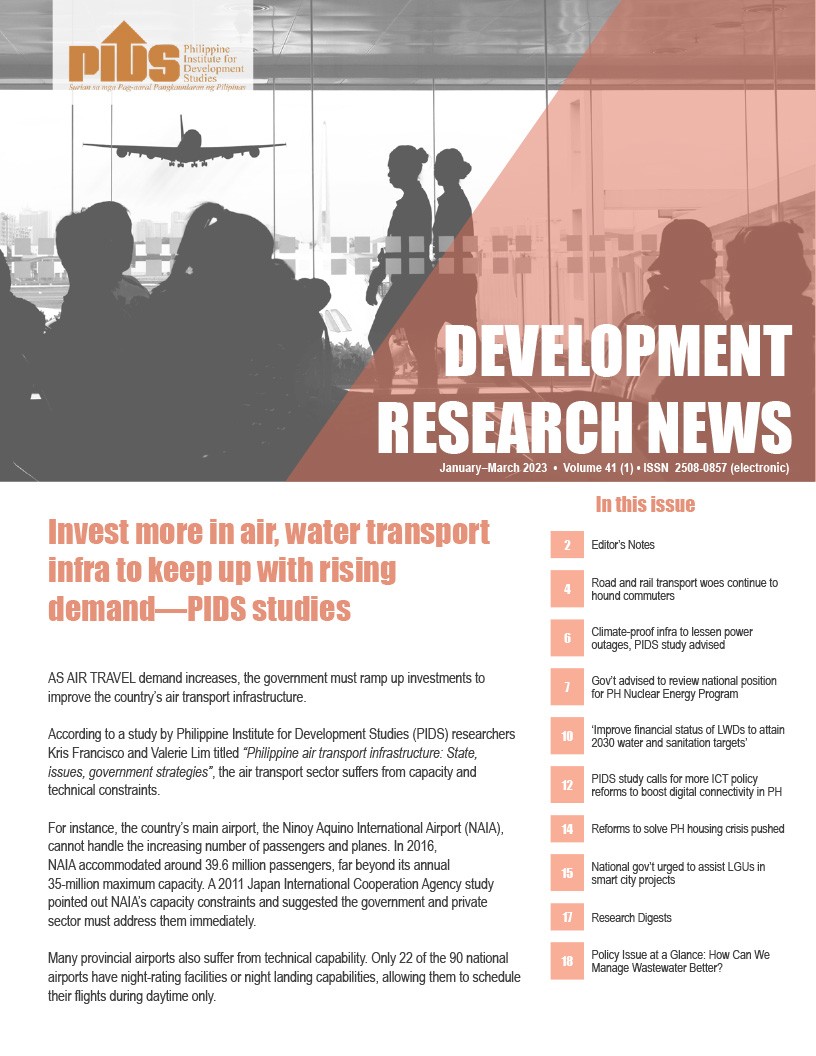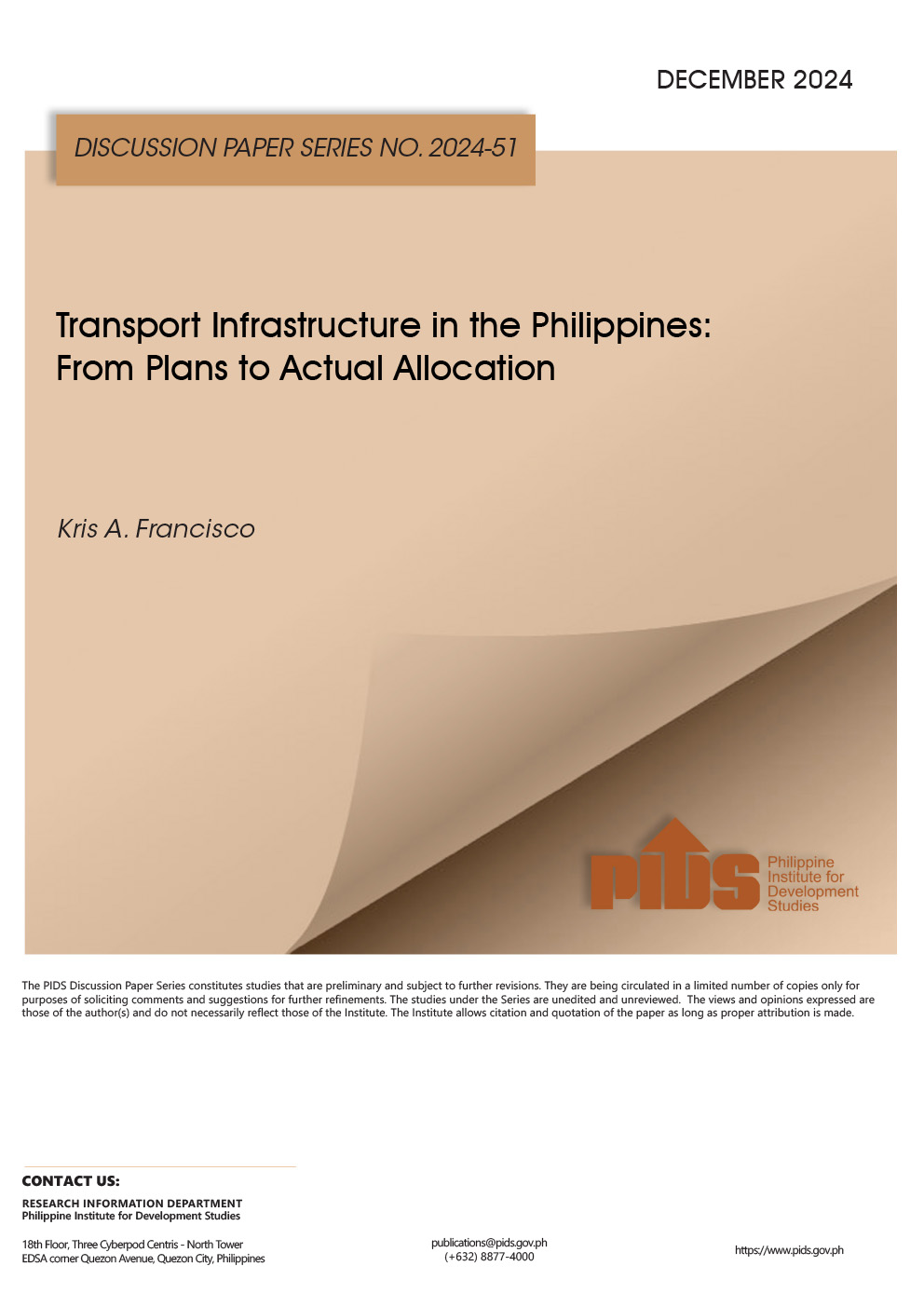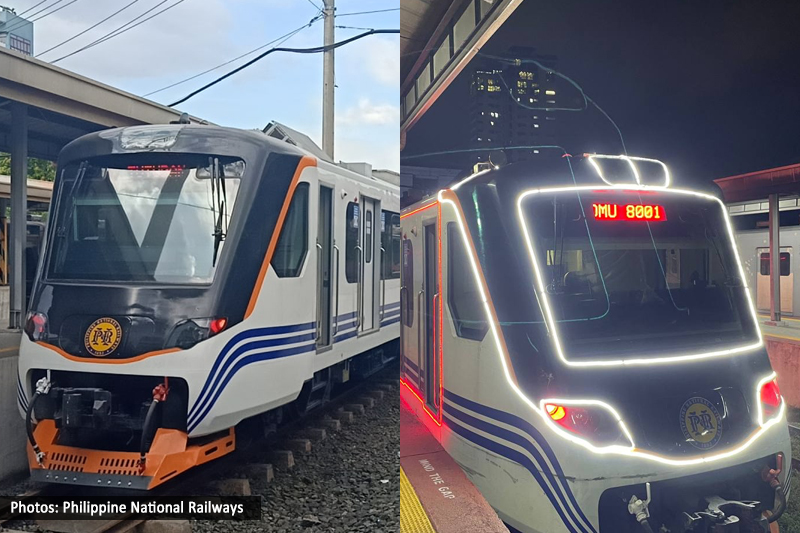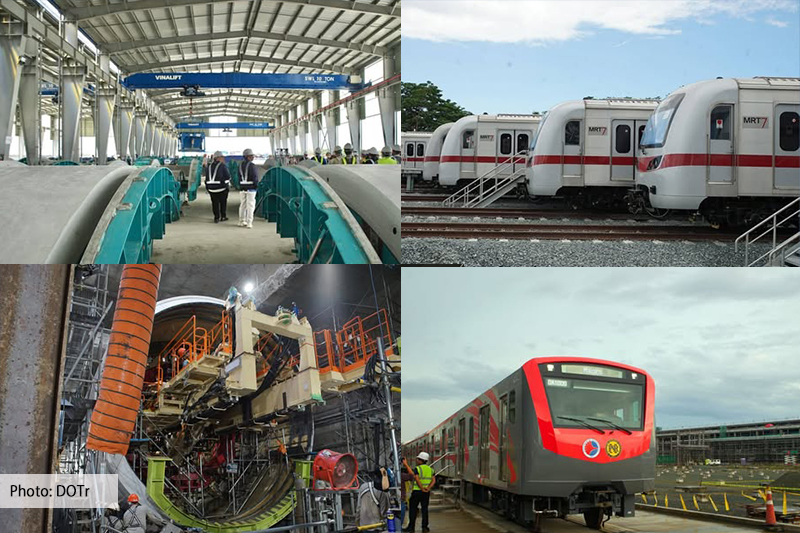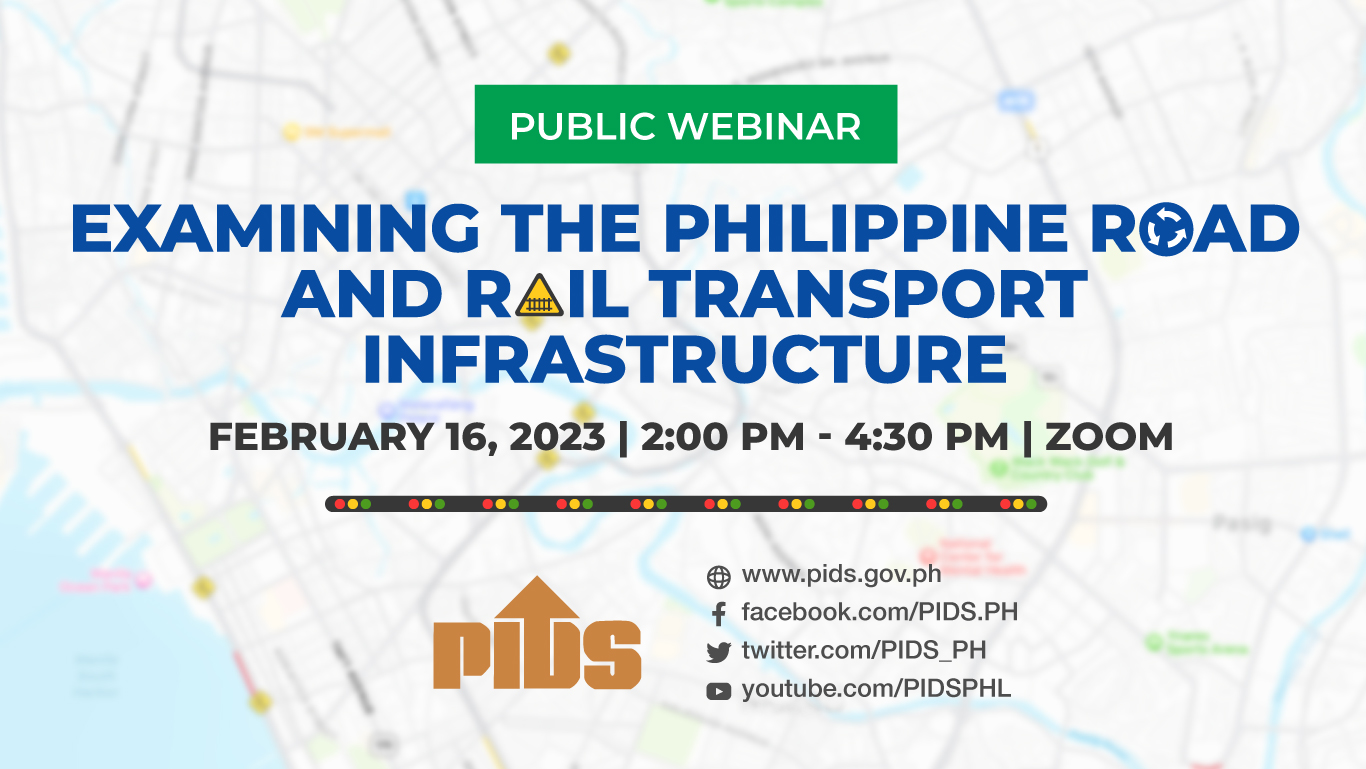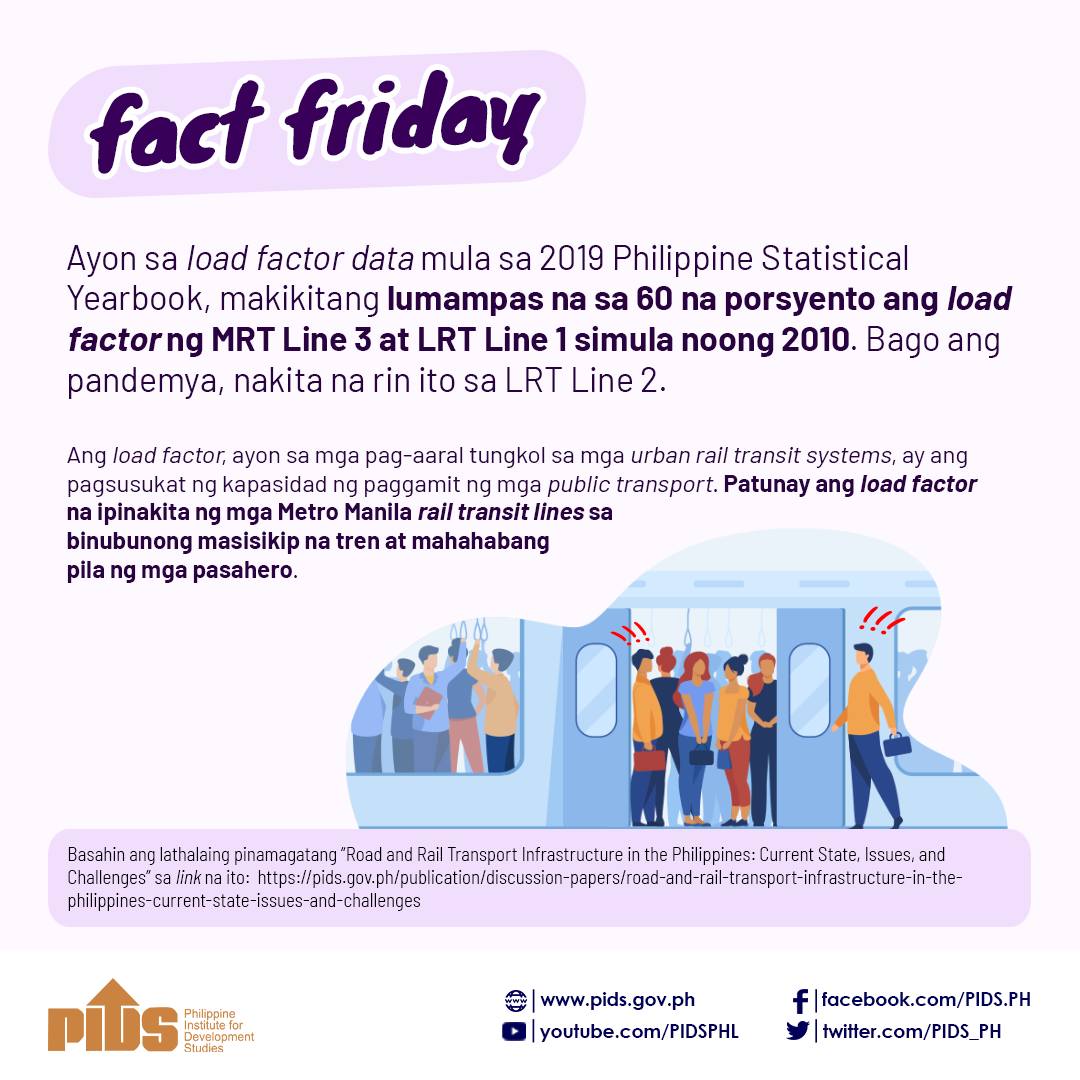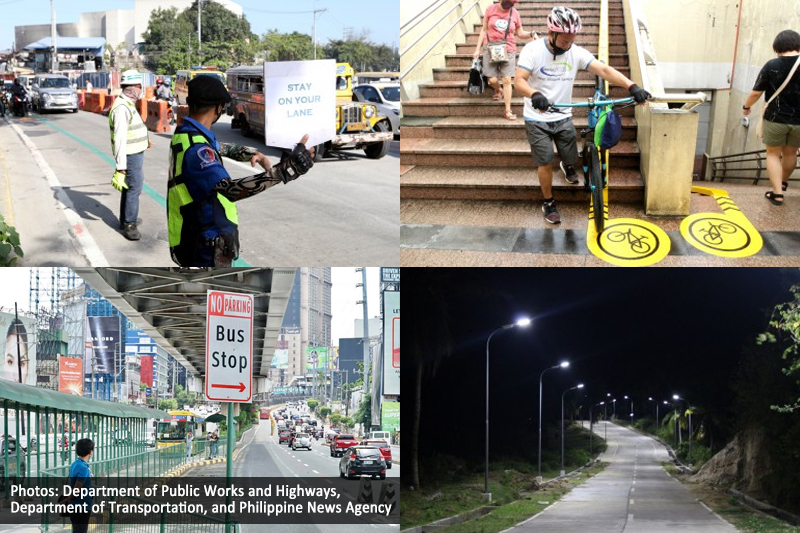
The government must revisit priorities and update solutions for the transport infrastructure, and not repeat old, insufficient quick fixes.
This was emphasized in a recent public webinar conducted by the Philippine Institute for Development Studies (PIDS) that featured the study “Road and Rail Transport Infrastructure in the Philippines: Current State, Issues, and Challenges”. Authored by PIDS Senior Research Fellow Adoracion Navarro and Research Analyst Jokkaz Latigar, the study analyzed the quantity and quality of the country’s road and rail transport infrastructure and its interlinked stages of planning, programming, budgeting, implementation, and monitoring and evaluation.
“Planning long-term can help address persistent [infrastructure] problems. A long-term national transport infrastructure plan that is legislated can improve the anticipation by stakeholders of future implementation activities. [It can] also help in the orderly preparation of requirements, like land dues, right-of-way, financing options, explorations, structures, management of political interests, and capacity building for implementors,” Navarro said.
The authors noted an increase in national road length over the years. Though the nationwide road density is gradually increasing, with 10.68 kilometers (km) of roads per 100 squared km of land in 2021, regional road densities remain low and suggest “weak connectivity”.
Road density is the ratio of the total length of the road network to a specified land area.
“There is a correlation between higher road densities and highly developed areas. A well-developed road transport sector paves the way for the creation of market access opportunities. [A well-developed road transport sector] facilitates economic activities and the ease of mobility for social services,” Latigar explained.
He added that rail transport development has “stagnated” over the years. Commuters face poor service due to severe rail congestion and poor quality and unsafe railway platforms.
Meanwhile, Dr. Robert Siy, co-convenor of the Move as One Coalition and discussant at the webinar, emphasized that the road infrastructure should also address the needs of the different road users, including pedestrians, cyclists, and public transport users.
"When the roads are built or expanded, sidewalks are often left out or reduced to almost nothing. Footbridges are built to remove ground-level pedestrian crossings for cars to move faster. Pedestrians are made to walk longer distances. People with disabilities and those unable to climb stairs become less mobile,” he said.
Fellow discussant and Department of Transportation (DOTr) Assistant Secretary Leonel Cray De Velez assured that the government remains committed to elevating the country’s transportation system to international standards in terms of affordability, comfort, efficiency, and accessibility.
“Tokyo is the gold standard [in mass transportation system]. The Philippines should be ambitious in reaching the same level as Japan for our railway system. We need to catch up [and] invest [more] in our mass transportation system,” De Velez said.
He said the DOTr has set several targets to be achieved by 2028, including one metropolitan railway for Cebu, Davao, Cagayan de Oro, and Cavite; 800 kilometers of new interregional railways with investment approval, particularly in Ilocos and Cagayan; and investment-approved highways for more than a third of provinces.
Engr. Ernesto Alday from the Department of Public Works and Highways Office of the Undersecretary for Planning and Public-Private Partnership Services shared that more road connectivity projects are underway. The department's disbursement of PHP 785 million in 2022 is 17 percent higher than the 2021 disbursement of PHP 668 billion.
Watch the webinar at https://fb.watch/iQlSYDjffC/ and https://youtu.be/0X5aIeKwFZE.
For more videos of PIDS events, go to https://pids.gov.ph/videos. ###

